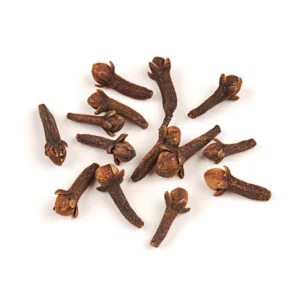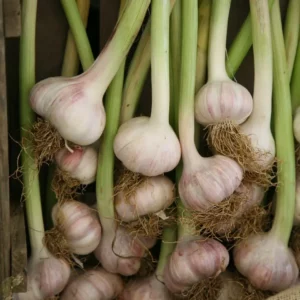Description
Allium Sativum
Allium Sativum is a member of the onion family. Garlic is similar to onions and other members of the Allium genus in that it has a characteristic smell and taste. The odor is caused by its sulfur compounds (specifically, allyl methyl sulfide), which are responsible for its pungent flavor. Garlic also contains several vitamins and minerals, such as vitamin B6 and selenium.
Allium Sativum contains antioxidants that may prevent or reduce the risk of certain types of cancer, including colon cancer and stomach cancer. Its antiviral properties may also help prevent colds and flu by killing viruses or preventing them from damaging healthy cells.
Allium sativum, commonly known as garlic, is a species in the onion genus, Allium. It is a plant used as a vegetable and herb. A. sativum is native to central Asia, including Afghanistan, Iran, and Turkey, and has been widely cultivated for millennia. Garlic has numerous varieties with different flavors and odor; most of them have cloves that divide into many segments called cloves. The bulbs are composed of multiple cloves with thin outer layers of skin (the epidermis) forming a protective covering over each clove. The strength of garlic is the taste and favor it adds to food. The taste of fresh garlic may range from sweet to hot and spicy depending on the variety or individual garlic.Allium Sativum contains an enzyme allinase which changes alliin into allicin when sliced or crushed. Allicin has antibiotic properties; it kills bacteria by damaging their cell membranes.
Garlic’s medicinal uses include lowering blood cholesterol levels,[4] preventing blood clotting,[5] preventing heart attacks,[6][7] reducing risk of cancer,[8][9][10][11] controlling blood sugar levels[12]
Garlic is a species of onion that grows in clumps of underground bulbs. A bulb consists of thin, parchment-like, tightly packed leaves wrapped around a central bud. Each bulb is formed from the leaf bases that were once attached to the main stalk and then dried. Garlic is the most widely cultivated species of the genus Allium, and it is often called “the stinking rose” because of its odor.
Garlic has been used throughout history for both culinary and medicinal purposes. It was used as an antibiotic in ancient Greece and Rome, it was believed to have strong aphrodisiac properties in China, Japan, India and Egypt, and it was used as a treatment for all kinds of ailments ranging from coughs to snakebite in ancient Egypt. The ancient Egyptians also prescribed garlic for athletes before competitions because they thought it would make them stronger.
Galen (129-199 AD) recommended garlic as a treatment for many different types of illnesses including fever, colds, ear infections and tapeworms. Galen also believed that garlic could prevent epileptic seizures by causing blood to flow more freely through the brain (a common misconception at that time).
Some sativum varieties are cultivated for their flowers, which are usually yellow and have a strong garlic odor. The flowers of Allium sativum are used in different kinds of cooking, such as in the traditional dishes that are part of the cuisines of many countries. It’s also the main ingredient of several dishes such as tzatziki, skordalia, and soups like avgolemono.
The bulbs can be eaten raw or cooked. Young garlic shoots (scapes) can be eaten raw in salads or used to add flavor to stir fries or dips. Garlic oil is sometimes added to meat while it is cooking to give it a garlicky flavor. Garlic salt is available commercially and can be used on bread instead of using separate salt and garlic powder.[10]
Garlic has antimicrobial properties against certain bacteria such as Escherichia coli O157:H7,[12] Salmonella enterica serovar Typhimurium,[13] Staphylococcus aureus,[14] Vibrio cholerae[15][16] and oral pathogens such as Streptococcus mutans[17] and Candida albicans.[18]




Reviews
There are no reviews yet.